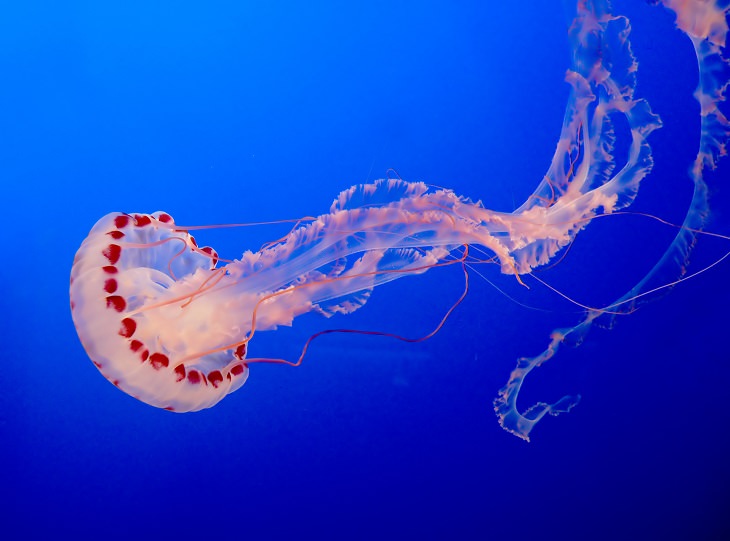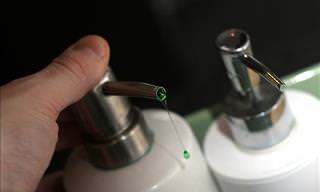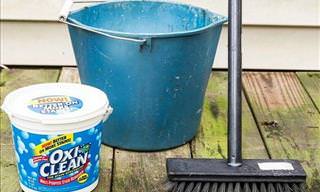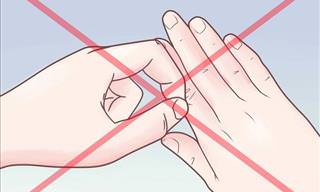

In one June weekend alone, more than 800 people had to be treated for jellyfish stings in the state of Florida. This surge was due to winds and currents in the area, so while not typically that common, it’s something everyone needs to cognizant about.
Around 150 million people are exposed to jellyfish each year. These creatures can be found in every ocean, and even in some freshwater lakes and ponds. Baby jellyfish can be as small as a coin, but some of the bigger ones can span eight feet in diameter with 200-foot long tentacles.
Jellyfish have cells called cnidoblasts that contain something called nematocysts. Each nematocyst contains a coiled stinging thread. When you get too close to a jellyfish, its tentacles can get tangled around you, causing pressure inside the nematocysts to build up, which causes the stinging – and boy can they hurt!
How to Relieve the Pain of a Jellyfish Sting

While you might have heard that urine helps to relieve the pain of jellyfish stings, there’s actually no evidence that proves this to be true. In fact, some experts go as far as to say that urine is completely ineffective when it comes to jellyfish stings. Therefore, if you get stung and ask your friend to pee on you, you’re going to be smelling of urine and still in pain.
So what should you do?
Well, first things first: Call for medical help. They’ll be able to help you the most. If you’re in an area where you find a professional, keep the following tips in mind.
One of the best things you can do if you happen to get stung is to get out of the water immediately and rinse the affected area with some salty ocean water. Tap water can actually reactivate jellyfish stinging cells, so it’s best to use salt water.
If you happen to have some vinegar handy, this can also be used to relieve the pain. Like ocean water, vinegar can help to protect the affected area. Just make sure that you’re not using too much pressure when treating the infected spot, as this can make the pain worse.
Furthermore, you’ll want to remove any visible tentacles after you get stung. You can use tweezers to pull them out, or even try to squeeze them out using some kind of sharp, hard surface, such as a credit card.
You’ll also want to soak the affected area with some hot water (somewhere between 105-115 degrees Fahrenheit). Let it soak for 20-45 minutes.
Lastly, be sure to grab some antihistamine or steroid cream from a local health store to help with the pain and healing process. If you visit your doctor for the sting, they’ll be able to prescribe one for you.
Source: tiphero
Images: depositphotos

Simple Self-Love: The Top 20 Ways to Be Kind to Yourself
You probably spend all your time being nice to others, but we bet there’s one person that you often forget about: yourself. Here's how to be kind to yourself.

Want to Quit Smoking? These Great Tips Will Help!
If you're looking to give up smoking, then take a look at the 8 great tips in this video.

Older Than 40? These Tips Will Help You Get a Beach Body!
The big 40 sneaks up on us. All of a sudden, it’s much easier to gain weight and much harder to lose it. Here's how to get a beach body when you're 40 or older.

Improve Your Health with These 11 Simple and Quick Hacks
To get healthy quick, all we need to do is follow these instant health upgrades. Take a look!

These Password Tips Will Ensure You're Safe from Hackers...
Cybercrime is increasing thanks to ever-improving technology. Therefore, it's very important that you have a strong password. These tips will ensure you do!

10 Great Money Tips from the World's Most Successful People
People rarely find success by accident. So why don’t you set yourself up for financial success by listening to the following pieces of advice.

10 Effective Ways to Boost Hair Shine
We’re all after beautiful glossy hair. Follow these tips to bring back the shine and silkiness to your locks.

11 Handy Flight Hacks for Parents Traveling With Children
These tips will keep your kids happy on long flights.
 5:33
5:33
Six Super Useful Tips For Cutting Cucumbers
This tutorial is going to teach you some creative ways to slice a cucumber quickly and creatively!
 11:26
11:26
These 40 Incredible Kitchen Hacks Are Too Good to Be True
If you love cooking, but hate all of the stress and hassle that it can entail, then this video is perfect for you!

Don't Throw Out Produce - Make a Gourmet Meal Instead!
Save yourself from having to throw away food, save money, and discover some palatable dishes along the way.
 8:07
8:07
A Smarter Approach to Measuring Body Mass Index
The body mass index can actually be misleading. Here’s what you should use instead.

Cutting These Things In Half Did Wonders For My Wallet...
Cutting the amount of certain things you use in half is an excellent exercise in frugality. Furthermore, you'll save money. Here are 10 things to cut in half.

Master the Kitchen with These 14 Fascinating Food Guides
Stash these food and cooking charts for later. They’ll come in handy.

7 Sunscreen Mistakes You Didn’t Know You Were Making
Avoid making these common sunscreen mistakes this season.

Maintain Your Credibility By Avoiding the Following Words
There are certain words that many of us tend to use habitually. Unfortunately we use them to our detriment, as they harm our credibility. Find out more.

10 Common Electrical Mistakes Homeowners Must Avoid
These common electrical mistakes could endanger your family.

Learn What Your Plant is Trying To Say By its Condition
Our plants give signs of what they are in need of through the physical characteristics they exhibit. Learn how to interpret these signs with this handy guide.

Healthy Baking: Tips for Making Healthier Baked Goods
Check out these tips that will help reduce fat and sugar in your baked goods and make them more nutritious.

Can't Name that Color? Just Use Our Handy Color Guide...
No more arguing about what color it is, from now on you have all the colors at your fingertips...

7 Cleaning Mistakes You Probably Make Every Single Day
These unhealthy washing up mistakes are very common, yet it's very easy to learn how to clean up properly. This could save you and your family from illness.
 1:32
1:32
Got a Zipper Problem? Here's How You Can Fix It!
Got an issue with your zip? Here's what to do about it.
 23:58
23:58
These Kitchen Tips Have Made My Life So Much Easier
This video will give you 31 unique kitchen tips and trick that will make life easier.
 8:30
8:30
A Full Guide to Cleaning Your Car's Interior
If you want a car that looks incredible on the inside, watch this video and follow these steps.

Organizing Tips: 13 of the Best Home Storage Hacks
Find some useful and clever organizing tips and hacks that will come in handy for every home.

These 15 Charts Are Both Useful and Interesting!
The 15 charts cover topics like health, animals, and classical music, and they are full of useful information, perfect for a lifelong learner like you.

Learn More About Your Partner By Asking Them These Questions
In a study by psychologist Arthur Aron (and others), they explored whether intimacy between two strangers can be accelerated by having them ask each other a specific series of personal questions. These 36 questions will help you discover some intrigu

This 2-Ingredient Cleaner Will Leave Your Deck Spotless
If your deck is dirty, you can clean it easily using this simple 2-ingredient cleaner.

10 Questions You've Always Wanted the Answer To
In this post, we dive into 10 fascinating questions you've probably wondered about at some point in your life, offering clear and concise explanations to satisfy your curiosity.

Remove That Painful Splinter - With Handy Baking Soda
Splinters are more painful than paper cuts, and very painful to remove. But thanks to baking soda you can actually remove splinters easily. And here's how.
 3:12
3:12
I Had No Idea You Could Do This With a Tape Measure
Did you know that you can turn a tape measure into a compass? This is just one of the many hidden features of the tape measure shown here...

9 Common Lawn Problems and How to Fix Them
Here’s how to identify and overcome some common lawn problems.

This is Why Getting Distracted Can Be Good For You
People think that getting distracted is a bad thing, but recent studies have actually disproved this. Learn more here!

How to Remove Chocolate Stains from Your Favorite Material
A chocolate stain can be one of the trickiest stains to remove as it’s known as a combination stain. Thankfully, these tips will help!

Debunking 8 Common Misconceptions About Taxes
Let’s break down eight of the most common tax myths and clear up the confusion once and for all.
 2:01
2:01
Why Pouring Beer Wrong Can Upset Your Stomach
Do you always feel bloated after drinking beer? There's a way to prevent this - all you need is a regular glass and this pouring technique...

Unlock Health Secrets with These Awesome YouTube Channels
Follow these YouTube channels for the best medical and health advice this year.

Impress Guests With 14 Nifty Napkin Fold Styles!
This terrific video tutorial will show you 14 easy-to-do napkin folding styles that are creative, whimsical and will guarantee your guests approach the tables with admiring smiles.
 13:03
13:03
Running Out of Storage Space? Keep These 20 Tips in Mind
Running out of storage ideas? Here are 20 space saving ideas to bear in mind.

15 Awesome Tips Just For Women!
At home, at work or in the middle of the street, there are situations that only women can understand. The following 15 tips are for women only!

Have Your White Clothes Lost Their Brightness? Try This!
Restore your clothes to their former glory with this natural remedy.

Eradicate Your Dry Skin with These Fantastic Tips
Everyone wants their skin looking its best, so here are some wonderful tips that'll help you get rid of any dry skin that is bothering you.

How to Clean the House Quickly and Efficiently
There are plenty of cleaning hacks out there, but which ones actually work? Find out here!

Learn How to Spot Fake Jewelry With This Guide
Fake jewelry has been around for a long time, with silver being sold as white gold and fake hallmarks being engraved into pieces of jewelry. Unsure if your jewelry is real or fake? This guide explains all.

How to Stop Worrying and End Anxious Thoughts at Night
Are anxious thoughts hindering your sleep every night? Here’s what you can do.

12 Helpful Uses for Eucalyptus Oil You've Got to Try
With so many health benefits, which you will discover in the article ahead, you'll find Eucalyptus Oil has many great uses.

Choose the Healthiest Breakfast Cereal With These Tips
Choose the healthiest breakfast cereal with these tips.
To enable your Ad-Free Subscription, please fill the fields below
Your subscription was successful, now you can enjoy an ad-free experience!!
Note: To make sure you get no ads, please make sure to log in to your account. If you are logged in already, then refresh the page. The subscription can be cancelled at any time.


